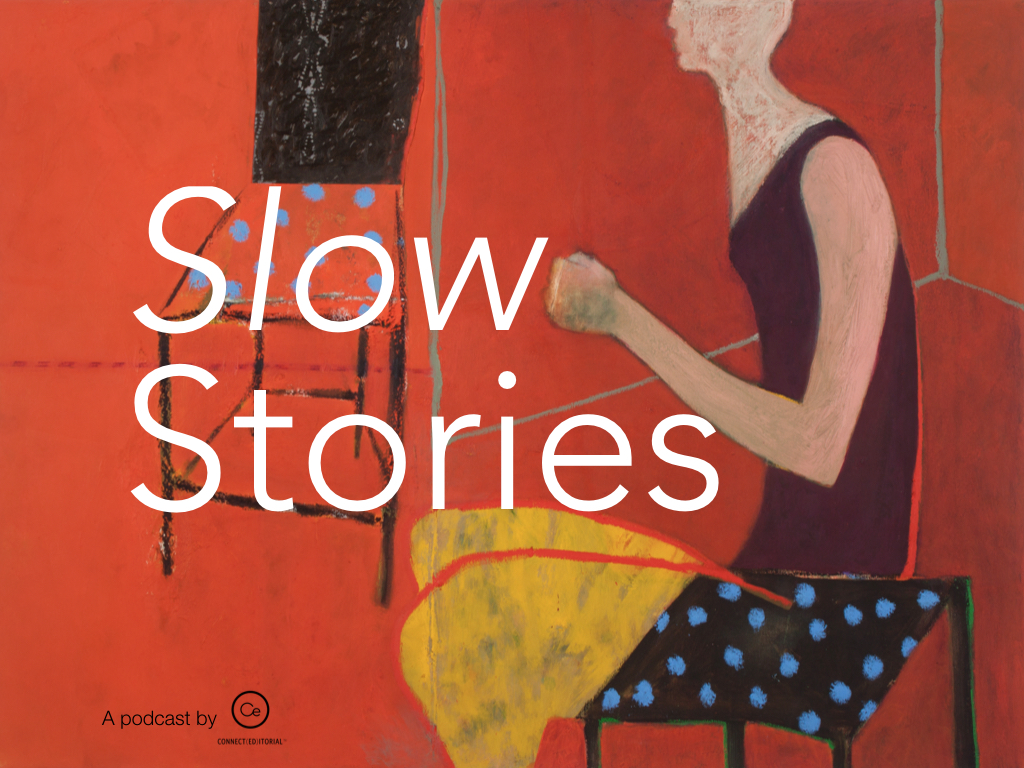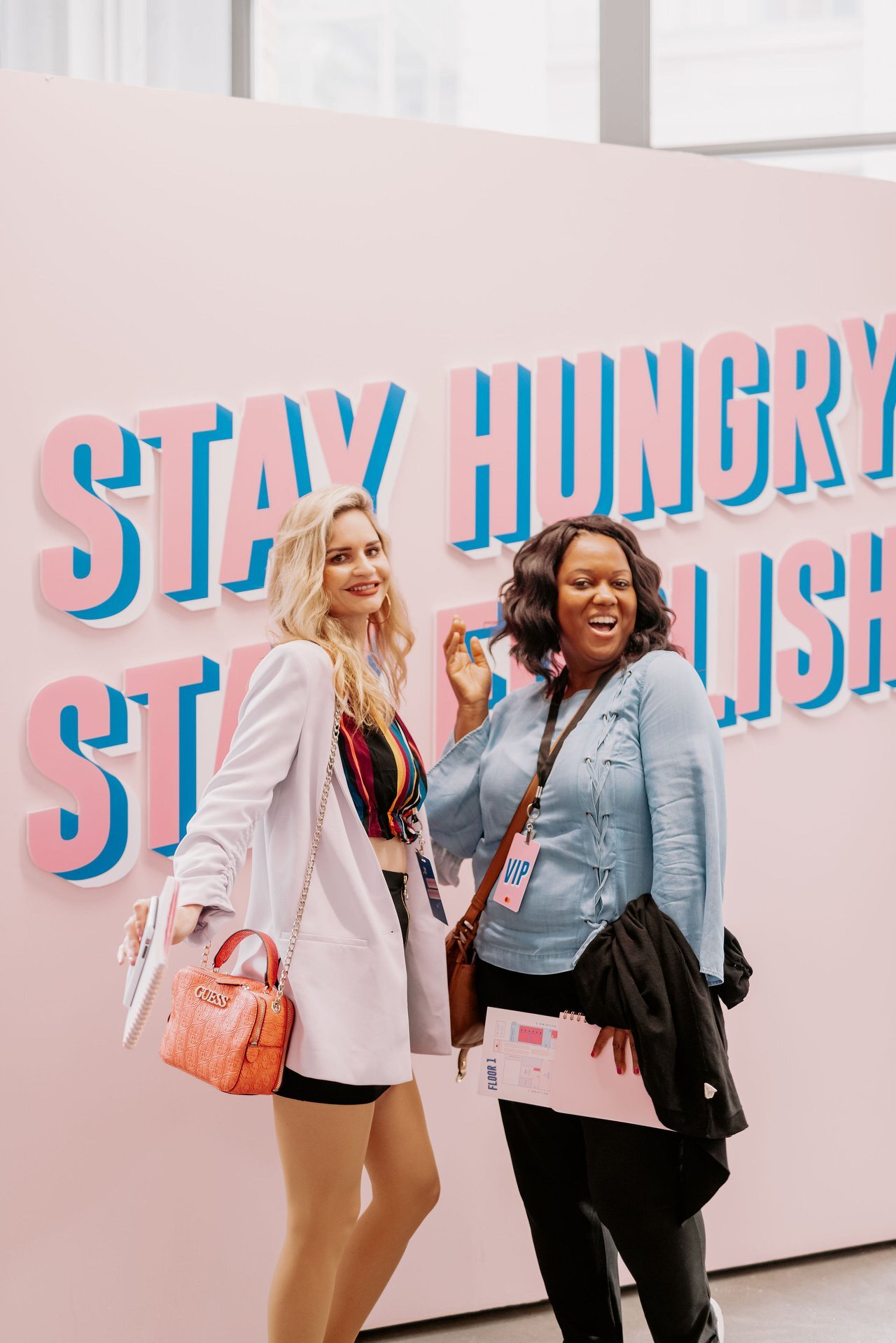Since extending CONNECT(ED)ITORIAL's Slow Stories Podcast into a column, I've loved connecting with the Create & Cultivate community around the conversation of slow content. I’m also thrilled to announce that season two of the podcast has recently launched on iTunes, and with that in mind, I'm even more excited to share an exclusive portion of our first episode with Brandy Pham of PLANOLY right here on the C&C blog!
For those of you who aren't familiar with her story, Brandy is the co-founder and chief creative officer of PLANOLY, the leading visual management and scheduling tool for Instagram. In our podcast interview, Brandy and I discussed her transition from jewelry designer to technology entrepreneur, and today she follows up on our discussion with some tactical advice on how to implement slow content and planning into your social media strategy.
Check out the full episode here and enjoy musings from Brandy below.
Why is it important to slow down as a digitally-minded founder? Can you share an instance of when slowing down inspired innovation at work?
I don’t remember ever getting inspired by staring at a screen or working tirelessly. So inspiration really comes when your mind is clear and you’re well-rested. When I took a mental break from work, that meant saying no to meetings, no to coffee dates, and not even going into the office for a while — and that's when PLANOLY's new product StoriesEdit came into fruition. I took a step back and really evaluated our roadmap and brought everything back to the perspective on why we first started PLANOLY, and that was to give power to small business owners like me. With that said, I wanted to go back to focusing on how we can further help our users build and grow their businesses. What type of products can we build (in addition to PLANOLY) to give them this power? In this day and age, it’s so vital to have an online presence and a digital strategy, and content is actually the most challenging part for businesses to create. Digital marketing is generally part of our everyday life now, and we can’t hide from it because that’s how consumers are learning what’s new, what they should buy, and so on.
StoriesEdit came to mind because we wanted something that was very easy and would be on web, but also give users the power on mobile to create more content and share products or stories that they may be sharing on their blog, and then easily post it all to social media. We started by launching with Instagram Stories templates, but we’re actually adding more canvas sizes for your grid and Pinterest too. We’re adding more templates that will help anyone who wants to share their products and their content easily on social media — With StoriesEdit, it’s like you have your own graphic designer on your team and no one knows it. That’s the beauty of this new product that we’ve launched!
How would you advise women who want to create a thoughtful content strategy, and what are some ways to utilize PLANOLY in this process?
I think that everyone should narrow down their goals and list out what is their purpose, what value they are bringing to their audience, and then work back from that. What are you really good at and what are people coming to you for specifically? And with PLANOLY, you’re able to actually create all that content, lay it out, and thoughtfully craft out your story so that you can work more seamlessly and efficiently. I think that using our grid and drafts features are great ways to strategize content because with drafts you can plan out by topic and then add content back to your grid whenever you are ready. I believe that people should decide on their content buckets and then use drafts first — you can do it the same way for Instagram Stories content too. You can use drafts for Stories and then really carefully plan out what type of stories you want to share. For example, on Mondays you share “A Day at the Office” or Tuesdays can be “Behind the Scenes at a Shoot," and so on. There are so many ways that you can use PLANOLY for your content strategy.
A big theme that’s always come up in these conversations includes how the fast- paced business landscape coupled with our content consumption habits can affect our productivity, and more importantly, our mental health. How have you learned to strike a balance or understanding when and what to post?
It's different between my personal account and the PLANOLY account. For PLANOLY, we always follow our content calendar, but we try to be very thoughtful about what type of content we're sharing on there. We really do ask what value the content is going to give to our audience and how it will spark inspiration or motivation. Our tone and brand voice are always positive (we never want to be negative!) even if it's something like having enough sleep, we turn it into something you can find funny or laugh about in a positive way, and in turn, that makes our audience smile.
For my personal account, it was very hard for me at first to share really personal stories, but I feel like it's my responsibility given my platform to share experiences with my son having autism by being an advocate for him, and also letting parents know that they're not alone. So, even when I'm drafting out those captions on PLANOLY, I take my time because I really like to sit on it before I post it. I would even tear up and cry before posting! I think it's ok to be vulnerable on your personal page and I always try to be mindful of not coming off to negatively, even if I'm sharing some type of struggle. For me, those are the two ways of posting on a personal and business account.
Slow content in many ways is all about the idea of “quality vs. quantity.” With that said, as an expert in the space, what would you say are the top pillars of slow, quality content?
I think for me, the top pillars are the following:
- Quality Images
As a marketer, branding professional, and consumer, it's important to share really clear, beautiful images. For example, say you're a photographer, and you've posted something really blurry — I automatically think that's the quality of your work and that can be a really bad look! So it's essential to have high-resolution photography.
- Messaging & Brand Voice
Your brand has to have clear messaging. Whether it's the graphic on your content itself or your caption, you should be really clear with your audience, and they should know exactly what you're talking about. The content also has to be on-brand.
- Value
The value of content is so important. I think everyone should always ask themselves before posting or even creating content, "What type of value is this bringing to my audience?" or "How does it make them feel?" And I would even ask myself, "What values does it bring to me and how does it make ME feel?" As the content creator, you should put yourself in your audience's shoes and really have that empathetic view, and if it makes you feel good/brings you value then your audience will receive it well too.
Are there any last words of wisdom that you’d like to share regarding slowing down, creating enduring content strategies, or building a conscious business?
I think too often that people want to launch a brand or business without really thinking it through, and don't really think about what it takes to build a successful company. If your brand is relying on just your product, there's no way it's going to stand out in the crowd. And if you want to build a conscious business, it needs to connect with people, and you have to take the time to craft a mindful strategy before even bringing it to market.
There's room for everyone, and everyone has a story, and you have to remember that people hold on to those stories. That alone is really intimate and powerful. So when you're starting off ask yourself, "What's the story I want to tell? What is my purpose? How is my product bringing value to potential customers?" You also have to ask yourself how you're going to make a living from this because you can't fund your business or pay your bills at the end of the day if you don't have a business strategy and think about these details before starting.
Rachel Schwartzmann is the Founder and CEO of The Style Line LLC. She created The Style Line in late January 2011 via Tumblr and has fostered The Style Line’s brand in its growth since then. Rachel has been featured in esteemed sources including Forbes, Refinery29, and MyDomaine and has also spoken at Create & Cultivate and Columbia University on establishing a unique brand point of view and entrepreneurship. On October 1, 2015, Rachel took The Style Line in a new direction as a boutique content company with the introduction of its slow content agency CONNECT(ED)ITORIAL.











